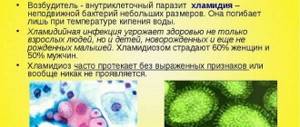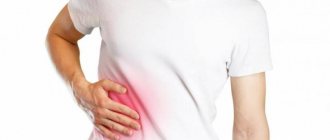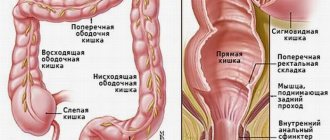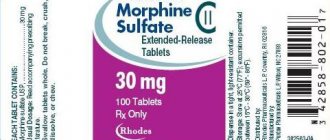Abdominal pain below the navel, causes of abdominal pain
Painful symptoms in any corner of the body are a sign of one or another deviation in its work, from one-time failures to serious pathologies. Painful symptoms, abdominal pain near the navel, are a fairly common sign that can indicate many diseases, including those that are fatal to humans. Considering the variety of deviations indicated by such ailment, when severe pain appears in the abdomen to the left, to the right of the navel, below or at the top of the navel, it is impossible to establish the exact causes of abdominal pain and make an accurate diagnosis without the help of a qualified specialist. Even one examination of the patient by a doctor is often not enough, and additional diagnostic procedures are required to obtain an accurate result. At the same time, knowledge about various pathological symptoms helps to form a preliminary idea of the severity of the disease.
Causes of pain
Pain above the navel exactly in the center of the abdomen (epigastric region) may be associated with pathology of the following organs:
- stomach;
- pancreas;
- small intestine;
- transverse colon;
- abdominal aorta;
- inferior vena cava.
If there is pain in the right hypochondrium, then possible sources are:
- liver;
- biliary tract;
- ascending or transverse colon;
- small intestine, in particular the duodenum;
- pancreas.
A potential cause of pain in the left hypochondrium is changes in:
- stomach;
- spleen;
- pancreas;
- small intestine;
- descending or transverse colon.
Abdominal pain above the navel is usually associated with inflammatory diseases of the internal organs (gastritis, pancreatitis, cholecystitis, enterocolitis), with the growth of tumors, the presence of gallstones, and impaired motility of the stomach and intestines (irritable bowel syndrome, gastroesophageal reflux disease).
Pain caused by changes in the gastrointestinal tract is most often accompanied by nausea, vomiting, heartburn, and stool upset.
The source of pain can also be large vessels of the abdominal cavity - the aorta and the inferior vena cava. Pain syndrome develops against the background of venous thrombosis or aortic aneurysm (protrusion of its wall).
Rare causes
More rare causes of pain above the navel are associated with pathology of organs that are located in other areas of the human body, which significantly complicates diagnosis. In this case, pain is transmitted to the epigastric region or hypochondrium along sensitive nerve fibers.
Rare sources of upper abdominal pain include:
- myocardial infarction;
- pneumonia, pleurisy;
- inflammation or rupture of the ovary in women;
- pyelonephritis, kidney stones;
- osteochondrosis;
- polyneuropathy, herpes zoster.
With the listed conditions, as a rule, additional symptoms occur that facilitate diagnosis. For example, with pneumonia, pain is associated with breathing, shortness of breath and cough are observed. With osteochondrosis, the spine itself usually hurts. Herpes zoster is accompanied by rashes on the skin along the nerve fiber. With exacerbation of urolithiasis, urination is impaired.
Peculiarities. There is another type of pain that is difficult to identify - psychogenic. Such a diagnosis is established only after a comprehensive examination, if the real reasons for the appearance of pain are not identified. With psychogenic pain, it is most often possible to find a connection with a traumatic situation, depression, and stress.
Aching, nagging pain near the navel, sharp, stabbing pain near the navel, causes
Around the navel there are several organs belonging to different systems, deviations in the functioning of which cause pain. Abdominal pain can be true and radiating, that is, displaced from the source of the disease located in another part of the abdomen.
Every disease has its own specific abdominal pain. Their varieties will be discussed below.
1 Aching pain in the abdomen in the navel area. Occurs with intestinal obstruction, increased gas formation, chronic enteritis, formation of nodes and tumors. It also occurs in diseases of the genitourinary system and in pregnant women as a result of sprained muscles and ligaments of the abdomen.
2 Acute pain in the abdomen near the navel. Signals about ulcerative processes in the intestines or abnormalities in the functioning of the gallbladder, with an umbilical hernia. If the pain that appears here radiates towards the lower back with the urge to urinate, it means the movement of kidney stones.
3 Nagging pain in the abdomen near the navel. Often observed during pregnancy, intestinal obstruction and genitourinary ailments.
4 Stitching or cutting pain in the abdomen near the navel. Indicates acute appendicitis, cholecystitis, pancreatitis. In women, it signals problems with the reproductive system. Colic of this nature also appears in the case of diseases of the digestive tract.
With an umbilical hernia, it occurs when pressure is applied to the place of pinching, and is accompanied by severe nausea, flatulence and diarrhea. A preliminary external examination shows a protrusion of the navel; upon palpation, a compaction is felt; pressure increases the pain. Cutting colic with nausea also indicates an attack of acute appendicitis. They become more noticeable when you press on the lower abdomen on the right.
5 Severe pain in the abdomen near the navel. May signal volvulus, acute appendicitis, umbilical hernia or cancer.
Less often, such severe abdominal pain occurs in children with exacerbation of hereditary abdominal migraine. With this diagnosis, pain accompanies the patient constantly and is repeated in attacks, supplemented by nausea, bloating and constipation. Over time, it intensifies and moves higher, closer to the stomach. Severe pain with loss of appetite, heaviness and belching occurs in a person suffering from gastritis. Acute infectious infections, irritable bowel syndrome and impaired blood flow in the mesenteric vessels occur with similar symptoms. With an umbilical hernia, such pain makes itself felt after lifting heavy objects, and in women who have recently had childbirth - in case of stretching of the abdominal wall.
Pain to the right of the navel
Above the navel is the pyloric part of the stomach and part of the duodenum. Painful symptoms above the umbilical region are caused by gastropathy and ulcerative processes in these organs. Initially, the pain manifests itself as a slight burning sensation and is accompanied by discomfort, then, as the ulcerative process progresses, the pain becomes brighter, becomes permanent, and when the ulcer perforates, it becomes sharp and unbearable.
- Pain below the navel can signal pathologies of the colon and problems of the female genital organs.
- Endometriosis is the most common pathology of the female genital area, one of the manifestations of which is pain below the navel.
- An ischemic condition of the intestine may manifest itself as pain below the navel. The chronic course of the process is manifested by constant pain, acute - by a sharp pain syndrome and paralysis of intestinal peristalsis.
- Atherosclerosis of the vessels supplying the intestines is manifested by aching, spastic pain and atonic constipation.
- In addition to the above conditions, pain below the navel may indicate the following diseases: cystitis, irritable bowel syndrome, ovarian or uterine cancer, abdominal aortic aneurysm, uterine fibroid.
- To the left of the navel at the top of the abdomen there are loops of intestine, omentum, renal hilum and ureter.
- Accumulations of gases in the lumen of the colon can provoke pain near the navel on the left side, in the lower abdomen. However, in the presence of a pathological process of the large intestine, pain will be accompanied by stool disturbances, blood and mucus in the stool, and temperature. Scarlet blood in the stool indicates hemorrhoids, tarry stools indicate bleeding in the gastrointestinal tract.
- Viral lung diseases can also manifest as pain in the umbilical area due to irritation of the diaphragm.
- On the right above the navel are the following organs - the ascending colon, the gate of the right kidney.
- Kidney pathologies cause pain in the front right and back.
- Appendicitis begins with painful discomfort in the navel itself, and subsequently the pain shifts to the right (see symptoms of appendicitis in adults, signs of appendicitis in children).
Based on the above, it becomes clear that pain around the navel or to the sides of it can indicate a variety of diseases, some of which are life-threatening. Whatever the cause of pain in the umbilical area, it must be diagnosed. After all, timely detection of even the most dangerous disease gives a high chance of recovery and the opportunity to lead a full, healthy life.
Why does a man experience pain in the navel area on the right? Most often the cause is in the large and small intestines. Pathological processes can be either chronic or acute. Doctors pay attention to the totality of symptoms and prescribe treatment based on them. So, let's figure out what diseases cause pain to the right of the navel.
- Inflammation of the cecum. This pathology is quite often diagnosed in men. Anatomically, the cecum is located just on the right side of the abdomen. The inflammatory process in it can be caused by infections such as salmonella, escherichia, shigella. The pain syndrome is characterized by an acute paroxysmal nature. In addition to this symptom, the man experiences diarrhea, which leads to dehydration. The diagnosis is made by an infectious disease specialist or gastroenterologist. The presence of an inflammatory process is determined by a blood test. At the slightest suspicion, the doctor also prescribes a bacterial culture to determine the pathogen. A colonoscopy may be performed. The choice of medications depends on the type of bacteria that became the source of inflammation. As a rule, antibiotics and anti-inflammatory drugs are used for treatment.
- Appendicitis. If severe pain appears on the right side and vomiting occurs, you should immediately go to the emergency room or call an ambulance. After the examination, the doctor will prescribe an examination. In most cases, the diagnosis can be confirmed by a blood test. The operation is performed within 24 hours (the time period depends on the patient’s condition). After this, antibiotics are prescribed.
- Cholelithiasis. Paroxysmal sharp pain in the navel area in men occurs due to inflammation of the gallbladder. This pathology is provoked by poor nutrition and bad habits, in particular alcohol. Inflammation worsens after the patient eats something fried or fatty. An attack of biliary colic is diagnosed by a surgeon. If there are a combination of symptoms, the doctor prescribes an ultrasound. This test will help determine the presence of gallstones. To improve the quality of life of a person, antispasmodics are prescribed before surgery - “No-shpa”, “Papaverine” and other drugs.
Pain to the left of the navel in men appears due to the development of pathological processes in the descending colon or sigmoid colon. By and large, they can be provoked by all organs located on the left side of the abdomen. In addition to those described above, the duodenum is also located here.
- Sigmoiditis. With this disease, the inflammatory process develops in the sigma. It is caused by Escherichia and Shigella bacteria. Men can also develop non-infectious pathologies. She is autoimmune. For example, with Crohn's disease, discomfort is localized not only on the left. They spread and invade other areas - pain appears under the navel. Men are also often diagnosed with ulcerative colitis. This disease manifests itself with the same symptoms. The nature of the painful spasm is paroxysmal. In intensity it is quite strong. The stool becomes liquid and streaks of blood appear in it. To diagnose sigmoiditis, you will need to do a colonoscopy.
- Descending colon. In men, pain in the navel area with a shift to the left is caused by polyps and tumors of the descending colon. The latter is located above the sigmoid, so during inflammation, unpleasant sensations are localized only on this side. If the cause of the pain is a tumor, then there will be no stool for several days. The stomach will swell. If you have such symptoms, you should immediately go to the hospital. There they will conduct an examination (ultrasound, colonoscopy) and prescribe an operation. Surgery involves removal of the affected area of the intestine and the tumor itself.
In men, pain in the navel area and above appears due to problems with the stomach or upper intestine. As a rule, this symptom signals the following diseases:
- gastritis;
- stomach ulcer;
- enteritis.
If the cause of pain syndromes is the stomach, then the man will also feel nausea and heartburn. These symptoms are characteristic of gastritis and ulcers. Gastroenterologists make the diagnosis. After confirmation, medication and a strict diet are prescribed. For gastritis, it is necessary to take Omeprazole, Ranitidine, Almagel and other antacids and antisecretory drugs.
Enteritis is a disease in which the small intestine becomes inflamed. In most cases, the cause is infection. In addition to painful spasms, stool disorders and fever are observed. To make a diagnosis, you will need to undergo a stool test. A culture is done in the laboratory to determine the type of pathogen.
The appearance of pain around the navel in women is associated with disruption of the functioning of the organs located in this area. So, in the center of the abdomen are located:
- blood vessels;
- tissue of the anterior abdominal wall;
- intestines;
- pancreas;
- stuffing box;
- peritoneum;
- ovaries and uterus (most of them are located in the lower abdomen).
Nausea occurs due to a signal being sent to the vomiting center of the brain. Its combination with navel pain in women is associated with the following pathologies:
- appendicitis;
- umbilical hernia;
- diverticulosis;
- pancreatitis;
- circulatory disorders of blood vessels in the abdominal cavity;
- oncological pathologies;
- low enzyme production.
The right kidney, part of the large intestine, and appendix are located in this area. The following serious diseases can cause pain in their projection:
- acute appendicitis;
- gastroduodenitis;
- inflammatory process in the colon;
- pyelonephritis;
- prolapse of the kidneys.
The main cause of pain in the navel area on the left is diseases of the small intestine. Also in this projection are the ureter, intestinal loops and omentum. A general list of causes of pain to the left of the navel includes:
- gastroduodenitis;
- inflammatory processes in the lungs;
- irritable bowel syndrome;
- sigmoiditis;
- ischemic or ulcerative colitis;
- inflammation of the mesenteric lymph nodes;
- bowel cancer;
- inflammation of the ovary;
- endometriosis;
- uterine fibroid;
- ectopic pregnancy;
- left-sided ovarian cyst.
Below the navel
Localization of pain below the navel is associated with intestinal diseases. A common cause is inflammation of the small intestine. Other factors that provoke the appearance of this symptom:
- irritable bowel syndrome;
- jeunitis;
- lack of jejunal patency;
- umbilical hernia;
- circulatory disorders of the mesenteric vessels;
- enzyme deficiency;
- diverticulosis of the sigmoid colon;
- gastrointestinal cancers;
- acute pyelonephritis;
- cystitis;
- period of menstruation.
An increase in temperature indicates the development of an inflammatory process in the body. Against the background of pain in the navel area, this symptom may indicate the following diseases:
- pancreatitis;
- inflammation of the appendages;
- follicle rupture;
- cholecystitis;
- peritonitis;
- stomach ulcer;
- problems with the ovaries.
When you press
The appearance of pain in the navel when pressing on it is associated with diseases of the rectum or genitourinary system of a woman. If such actions intensify the pain syndrome, then the cause may be:
- omphalitis;
- appendicitis;
- volvulus of the small intestine;
- diverticulosis;
- intestinal ulcer;
- abdominal migraine;
- umbilical hernia;
- adhesions in the peritoneum;
- thrombosis of mesenteric vessels;
- flatulence;
- aortic aneurysm.
Acute pain
Too sharp or sharp pain in the navel area in women appears due to more serious pathologies, such as volvulus, appendicitis or intestinal obstruction. The pain syndrome can be cramping or constant. Possible causes of the symptom:
- atherosclerosis of the vessels feeding the intestines;
- exacerbation of chronic enteritis or gastroenteritis;
- deformation of the mucous membrane under the abdominal cavity;
- irritable bowel syndrome;
- cystitis;
- intussusception;
- umbilical hernia;
- oncological diseases;
- inflammation of the sigmoid colon;
- attacks of appendicitis;
- intestinal dyskinesia;
- cholelithiasis;
- worms;
- cyst breakthrough;
- Crohn's disease.
After meal
What other causes could there be of abdominal pain near the navel?
- acute obstruction of the small intestine, volvulus, adhesions, advancement of gallstones and tumors;
- acute and chronic circulatory dysfunction in mesenteric vessels caused by pressure from tumors or thrombotic blockage;
- prolonged inflammatory process in the small intestine (chronic jejunitis) due to metabolic failure, immunodeficiency, unbalanced nutrition, chronic hepatitis;
— enzyme deficiency and subsequent insufficient parietal digestion;
— oncological diseases;
- irritable bowel syndrome.
Volvulus of the small intestine (intestinal obstruction)
The disease begins quite acutely. The main symptom is sharp pain (constant or cramping) in the depths of the abdomen.
They are usually localized in the right side of the abdomen and around the navel.
The pain is usually accompanied by frequent and unrelieved vomiting (may be fecaloid), constipation and flatulence.
At the very beginning of the attack, constant dull pain in the navel and abdomen on the right can be replaced by periodic cramping pains with increasing intensity.
Often the pain is so severe that patients (unable to restrain themselves) begin to scream . Some relief from painful sensations comes from being in the fetal position with the knees brought to the stomach.
If you have symptoms of small bowel volvulus, immediate medical attention and hospitalization are recommended.
What diseases can there be if there is severe pain near the navel, how to determine the cause of abdominal pain?
1 If there is severe pain around the navel - with acute appendicitis or umbilical hernia.
2 If there is severe pain below the navel - Crohn's disease, enteritis, mesadenitis, endometriosis, diseases of the genitourinary system or large intestine.
3 Pain above the navel in adults and children – gastropathy, gastric or duodenal ulcer;
4 On the right side of the abdomen there is pain in the navel area - appendicitis, volvulus of the small intestine;
5 Pain appeared on the left side of the abdomen near the navel - accumulation of gases in the large intestine, pathology of the pancreas and spleen.
Periumbilical pain can be visceral, that is, provoked by spasms and sprains, or somatic, caused by irritation of the spinal nerves running through the abdominal cavity.
Distinctive features of pain near the navel of representatives of different ages and genders
Pain localized near the navel is most common among women. This is explained by the fact that representatives of the fairer sex more often suffer from disorders of the urinary and reproductive systems. Unpleasant sensations in most cases occur under the influence of cystitis, endometriosis and inflammatory processes in the pelvic organs, fibroids and uterine cancer. Pain near the navel in children is the result of rapid development of organs and other elements of the digestive system or poor nutrition. In children, unlike adults, in such cases the limbs turn pale and become colder than the rest of the body. These symptoms are present with volvulus, which, if delayed with medical attention, can have the most severe consequences, including death.
Colic near the navel in infants occurs as a result of improper digestion and, as a rule, goes away on its own by the age of one and a half years. Similar pains in representatives of the stronger sex occur with megacolon disease and are supplemented by constipation and intoxication due to stagnation of feces. These disorders often lead to deterioration of respiratory function and heart function. Pain near the navel also accompanies diverticulosis, chronic prostatitis and urinary dysfunction. Pregnant women experience painful discomfort in the immediate vicinity of the navel due to weakening of the abdominal muscles and displacement of internal organs or slow intestinal motility.
Causes of pain around the navel in women
Such uncomfortable and sometimes unbearable sensations signal the presence of serious diseases in a woman’s body. Sometimes the causes of pain below the navel are not related to problems with internal organs, but arise, for example, due to wearing tight clothing. But pain can also be caused by unsuccessful piercing or natural physiological processes, which mean pregnancy. Identifying the cause of unpleasant symptoms is an important part of not only diagnosing diseases, but also their treatment.
Pregnancy is different for each woman, and rapid fetal growth or carrying multiple children at the same time can cause pain as a result of stretching of the abdominal wall.
A person who considers himself healthy may experience discomfort due to helminthic infestations - parasitic diseases can not make themselves felt for a long time, but often provoke unpleasant symptoms such as pain in the navel.
Disorders of the gastrointestinal tract and inflammation of the appendix can also cause pain - in this case, the pain radiates to different parts of the abdomen. Often, symptoms occur against the background of hormonal fluctuations, which is typical for patients of childbearing age.
Most often, pain in the navel area in women is associated with diseases of the genitourinary system. Disorders that are characterized by similar symptoms include the following:
- inflammation of the bladder - cystitis;
- endometriosis and endometritis;
- benign and malignant formations of the uterus and appendages;
- intestinal disorders;
- circulatory disorders in the pelvic organs.
Pain in the navel area does not always tingle in the middle. It can bother you on one side or the other, or appear slightly lower or higher.
To understand the cause of pain and begin proper treatment, it is important to observe the nature and intensity of sensations, and also conduct an examination to identify possible concomitant disorders and complications.
In men, pain in this area of the abdomen is in most cases associated with intestinal disorders, appendicitis or hernia. For women, this list is much more extensive; they may experience discomfort for many physiological reasons, and may suffer from pain resulting from the development of dangerous and sometimes intractable diseases.
Natural causes of pain below the navel include pregnancy and ovulation. In almost every menstrual cycle, a woman of childbearing age releases an egg from the ovary; pain around the navel appears as a result of a rupture of the membrane of the follicle in which it matures. Representatives of the fair sex, who are especially susceptible to unpleasant sensations, feel this process more strongly, while for others it may be asymptomatic.
The appearance of pain below the navel in pregnant women should not cause concern - this completely physiological process causes stretching of the abdominal wall as a result of fetal growth. Even with normal development, an enlarged uterus displaces a woman’s internal organs and creates not only discomfort, but also pain.
But also during pregnancy, there may be a deterioration in intestinal motility, difficult passage of food, or individual characteristics of this physiological process.
DETAILS: If a vein in the leg is pulsating: what to do? - Superfb
Painful sensations of various types occur in women with the development of disorders in the functioning of the pelvic organs. Pain in the projection below the navel most often occurs as a result of disorders of the reproductive and genitourinary sphere.
It can occur with the slightest hypothermia, as well as with the ingress of pathogenic bacteria. Most often it manifests itself as spasms in the navel area on both sides - it stings more strongly during palpation, as well as during sexual intercourse. The pain is accompanied by many symptoms characteristic of inflammation.
Endometriosis
An abnormal proliferation of endometrial cells in an atypical location causes pain throughout the lower abdomen, side and lower back, and is also often localized in the umbilical area.
Cystitis
The inflammatory process in the bladder is always accompanied by a symptom such as pain and, despite the fact that it hurts, as a rule, in the lower abdomen and groin, the aching sensation spreads to the navel.
Appendicitis
Inflammation of the appendage of the cecum is characterized by sudden pains; when the sensations become aggravated, they spread to the entire abdomen. Sharp stabbing pain in the navel may also be observed.
Inflammation of the intestinal mucosa is manifested not only by pain, the localization of which can constantly change, but also by upset stool and bloating.
Diagnostics, what to do if there is severe pain near the navel?
Any pain indicating pathological processes in the body is accompanied by additional symptoms, on the basis of which the doctor makes a preliminary diagnosis before receiving test results. Therefore, it is important to remember and then describe to doctors in as much detail as possible all the details associated with the deterioration of well-being. The main questions that need to be answered are the duration of the pain near the navel, its presence in only one place or movement/recoil (irradiation), the nature of its occurrence, the change in the localization of discomfort symptoms from the onset of the ailment to the examination. The first thing the doctor does is examine the patient and collect an anamnesis based on questioning the patient regarding the characteristics of pain. After this, the doctor decides on the need and types of other diagnostic measures: blood and stool tests, ultrasound, colonoscopy or irrigoscopy.
Tablets and drugs for abdominal pain, which ones to choose?
To relieve the patient of painful symptoms, the following drugs are prescribed:
1 No-spa for abdominal pain. Used to prevent and eliminate spasms of smooth muscles of internal organs, tenesmus, spastic constipation, and acute ulcerative formations. Contraindications: hypersensitivity, hypertension, cardiogenic shock, liver or kidney failure.
2 Spasmalgon, if abdominal pain appears. Prescribed to suppress mild to moderate pain during stomach or intestinal colic and other ailments accompanied by spastic contractions of smooth muscles.
The drug should not be taken if there is intestinal obstruction, hypersensitivity, pathologies of the heart and blood vessels, etc.
3 Papaverine for the treatment of severe abdominal pain. Antispasmodic, necessary to weaken the tone of smooth muscles of any organ of the digestive system. Used for renal colic, cholecystitis, cholelithiasis, uterine tone during pregnancy.
It is not recommended for use by children under 6 months, the elderly, patients with hypersensitivity, or renal failure.
4 Phosphalugel and treatment of abdominal pain. It has a oxygen-neutralizing effect, envelops mucous membranes, and acts as a strong sorbent. Necessary for the treatment of gastritis and ulcerative processes in the stomach and duodenum, erosive processes in the digestive tract, duodenitis, pancreatitis, enterocolitis, heartburn, poisoning, etc.
In addition to hypersensitivity, contraindications to its use are chronic renal failure, hypophosphatemia and Alzheimer's disease.
5 Smecta, when used to treat pain in the area around the navel. A strong adsorbent drug used for various gastrointestinal disorders. Eliminates pain syndromes in the gastrointestinal tract due to poisoning, heartburn, bloating, acute and chronic diarrhea, and infectious infections.
Contraindications: intestinal obstruction, isomaltase-sucrase deficiency, individual intolerance.
6 Espumisan for the treatment of abdominal pain. Designed to relieve flatulence, dyspepsia, Roemheld syndrome. Widely used in diagnostic procedures when examining the abdominal cavity. It is strongly not recommended to use if you are highly sensitive to the active substance of the drug.
Why does my stomach hurt in the navel area?
The appearance of pain around the navel in women is associated with disruption of the functioning of the organs located in this area. So, in the center of the abdomen are located:
- blood vessels;
- tissue of the anterior abdominal wall;
- intestines;
- pancreas;
- stuffing box;
- peritoneum;
- ovaries and uterus (most of them are located in the lower abdomen).
Stomach pain in the navel area and nausea
Nausea occurs due to a signal being sent to the vomiting center of the brain. Its combination with navel pain in women is associated with the following pathologies:
- appendicitis;
- umbilical hernia;
- diverticulosis;
- pancreatitis;
- circulatory disorders of blood vessels in the abdominal cavity;
- oncological pathologies;
- low enzyme production.
Traditional methods for treating umbilical abdominal pain at home
Alternative medicine recipes are as effective as some pharmaceutical drugs. Their use in the fight against pain symptoms around the navel should be careful so that the body receives benefit from the treatment and not harm. Before using traditional recipes, you should consult your doctor. Among the most common remedies: a decoction of rowan fruits; infusion of herbal tea: horsetail, chamomile, rose petals, wormwood, dill, rose hips, dried herbs and calendula; infusion of fresh or dried gooseberries or blueberries; infusion of chamomile, yarrow and flaxseed. The appearance of pain near the navel requires a mandatory change in the patient’s diet and diet. Canned foods, smoked meats and marinades should be excluded from consumption. If after this the spasms do not stop, you need to seek help from a qualified specialist.











